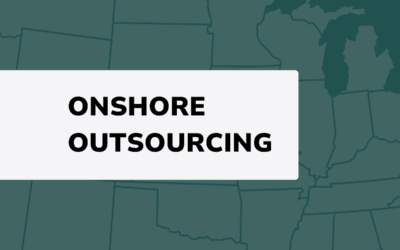If you thought the smartphone turned your daily life upside-down, just wait for the transformation the internet of things (better known as IoT) will cause in how you live, work, shop, and much more. According to Statista data, there were more than 42 billion connected devices in use during 2022, and that number is expected to grow to more than 75 billion in just three more years.
IoT Stats for 2022
- Covid impacted global IoT market, the estimated value for 2020 is $742 Billion
- Every second, 127 new devices are put online for the first time
- The number of cellular connections is expected to reach 3.5 Billion in 2023
- Smart factories in North America could be worth more than $500 Billion
- Total investments of IoT could reach $15 Trillion by 2025
But while these devices will change the world dramatically, one thing that won’t change is how Netfor supports the companies that manufacture and sell them. We’ll help those innovators get their neck-breaking ideas into the marketplace more efficiently, field the inevitable questions about what to do when they don’t quite behave, and provide the technical expertise to deploy and service them in the field. That’s because Netfor’s proven, proprietary approaches are technology- and market-agnostic.
Take Netfor’s approach to field services. You can trust your IoT device’s success to our more than 6,000 highly skilled, prequalified, trusted technicians across the U.S. (including territories) and Canada. They have the knowledge, tools, and resources to install, update, and service your IoT device, whether it’s a consumer product or something highly technical. Plus, they’re supported by accountability measures that build confidence and are equipped with the soft skills that protect your hard-earned reputation.
Even if your neck-breaking IoT device does something nobody’s ever seen, we can match its needs to the skills and knowledge in our database, whether the work needs to happen in Imperial Beach, California; Prudhoe Bay, Alaska; or Key West, Florida.
So which IoT devices are most likely to break necks during 2023? We’ll spotlight some of the most exciting technology and the challenges it creates in this article.
Retail and Restaurants
One of the biggest growth areas for IoT devices is Retail, including the quick-service restaurant sector. We’ve become accustomed to ordering kiosks in McDonald’s and Panera, and we expect to see more sophisticated devices as technology improves. Given the combination of the Great Resignation and battles over minimum wage, traditionally staff-heavy sectors like retail stores and QSRs are eager to minimize headcount. Devices that quickly and accurately capture customer orders and incorporate them into workflows, such as food preparation and checkout, allow these organizations to satisfy customers more quickly with fewer employees.
Amazon’s storefronts allow customers to walk in, choose the merchandise they want, and walk right back out with zero employee interaction, as the store automatically charges their preferred payment method. How long before grocery and other chains adopt similar technology? In addition to happier customers, these systems provide real-time footfall data to aid with planning and stocking.
The growth raises issues related to device management. As franchisees and far-flung locations become more dependent upon IoT devices, companies must find efficient ways to deploy, update, and service those devices. Netfor has been doing that successfully and affordably for many years.

Medical and Health Devices
Perhaps the most exciting use of IoT devices falls into the category known as the Internet of Medical Things (IoMT). Hospitals and other healthcare providers increasingly rely on sophisticated machines and the data they capture to improve care and outcomes. The Covid pandemic accelerated consumer familiarity and comfort with telehealth services. Add in consumer devices capable of helping people better manage their health from the growing monitoring capabilities of smartwatches, to devices like the KardiaMobile that gives consumers access to hospital-quality EKGs anywhere. It’s easy to see which IoMT devices are expected to be a $350+ billion business by 2027. When people’s lives are on the line, customer service is critical, so wise IoMT partners will look for innovative partners like Netfor.
Artificial Intelligence and Data Analysis
The rise of IoTs is paralleled by the emergence of more powerful artificial intelligence technologies, which is no surprise, as the two technologies can leverage each other’s capabilities. When combined, the two are often called AIoT. In 2019, AIoT devices generated an estimated 18.3 zettabytes (183,000,000,000,000 GB) of data but are expected to create nearly four times that amount by 2025. Most of us use one of the most common examples each time we ask Siri, Alexa, or another voice assistant to answer a question or perform a task.
Emerging Security issues
While IoT devices may be good at breaking necks, there are significant concerns their proliferation will make it easier for cybercriminals to make their own breaks into networks to steal data. Palo Alto Networks reported that more than half of IoT devices can be attacked by bad actors and 83 percent of IoMT devices ran on unsupported operating systems, putting private data in jeopardy.
So it comes as no surprise that the government is racing to establish security labeling for IoT device manufacturers. Spending on security for the devices is expected to cost about $6 billion in the coming year, underscoring the need for IoT manufacturers to have an infrastructure – or a partner like Netfor – that can keep the devices up-to-date to head off the next attack. Before you count on your newest product to break necks, make sure you have the right partner to protect your customers … and your reputation.




